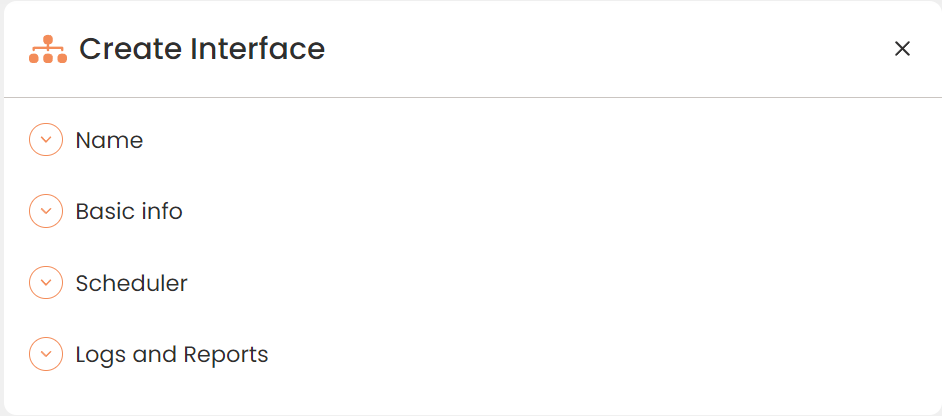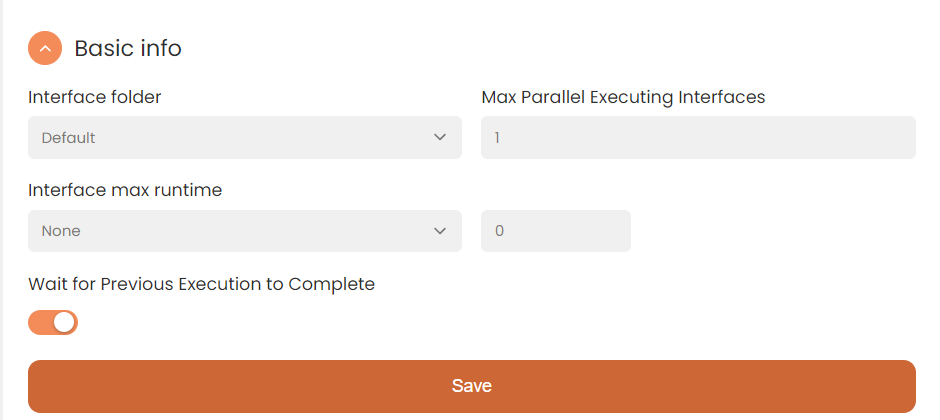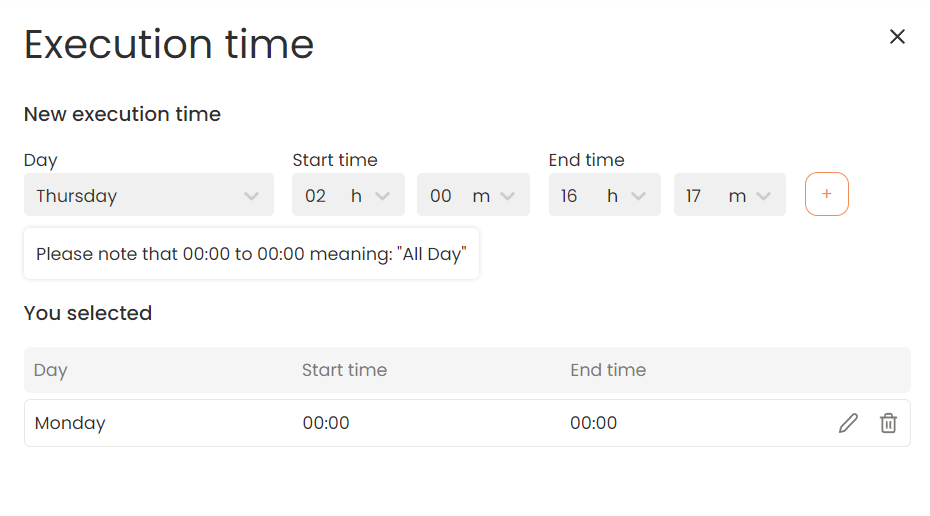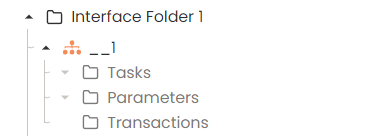Creating a New Interface
The information on this page relates to the new upgraded interface of the IConduct platform. To view information about the Classic version of the user interface, follow this link.
Creating a new interface is the first step in the process of establishment of a scheduled procedure that includes a variety of tasks connecting two (or more) specific applications. The recommended order to define various entities:
As some of the Schema definitions are automated, the order may shift slightly in specific cases.
In addition, depending on the systems involved in the transactions, you may need to define specific parameters.
As some of the parameters are used by various Steps, you may need to define a parameter prior to defining a new Step.
To create a new interface, select Interfaces in the Navigation Pane and click New on the Toolbar. The Interface page opens.

New Interface page with all sections folded
The fields listed on this page aid in defining the interface settings – when it will run and other relevant details. To save any changes, press Save on any of the sections.
The interface must be given a Name first in the Name section to be saved.
Basic Info section
In this section you define the basic settings of the interface execution.

The Basic Info section of the interface creation window
The following table describes these settings.
| Fields | Description |
|---|---|
|
Interface Folder |
A folder, where the new interface will be created. Choose a folder from the drop-down menu. |
|
Max Parallel Executing Interfaces |
Enter the quantity of the interfaces. |
|
Interface max runtime
|
Select the time unit for the interface execution maximum run time in seconds, minutes, hours, days, weeks, or months, and enter the value. The interface will be automatically aborted if runtime exceeds this value. |
|
Wait for Previous Execution to Complete |
Activate this switch to disable the interface from execution if other interfaces are running. |
Scheduler
In the Scheduler section you define the way the interface runs in time.

The Scheduler section of the interface creation window
The following table describes scheduling settings available for the interface.
| Fields | Description |
|---|---|
|
Run on Scheduler |
Click to enable. This determines whether the interface will run manually or automatically. The run is scheduled via the iConduct scheduler. |
|
Allow Run on API |
Click to enable. This checkbox allows initiating the interface using iConduct API. The run is scheduled via the iConduct API. |
|
Interval Period |
Use to determine the time lapse between scheduled repeats of the interface to wait before re-running the interface. First, select the time unit, then select the amount of time. If you select hours and an interval of 10, then the scheduler will run the interface once every 10 hours. |
|
Base Execution Time |
Select the time and date from the calendar. |
| Use Base Execution Time | Select to define a specific date and time as the starting point for the predefined intervals. If you select 10:00 am and set the interval to one hour then the interface will run every hour on the hour. This is true for every time difference, whether it is minutes, hours or days. Optional. The system will run this interface based on the definitions, starting from when it is first activated. |
| Execute at | Use to select one or more specific dates and times on a daily/weekly basis in a new window. |

Execution time window
Logs and Reports
This section defines the reporting settings of the interface, i.e., log tracking, messaging, alerts, reports, and schema records.

Logs and Reports section of the interface creation window
The table below describes the reporting settings of the interface.
| Fields | Description |
|---|---|
|
Log Level to Save |
Select the level of detail that will be saved to a log file during a transaction. There are 6 levels of data:
|
|
Log Level to Mail |
Select the level of detail that will be saved to a log file during a transaction and mailed to selected email addresses at the end of a transaction. The same 6 levels of data are available. It is possible to receive log data on an individual Step level as well as for the whole Interface. These 6 levels of data logs are described above. |
|
Debug Logging Mode? |
Select to run the interface in this mode. The log created in this mode contains additional error information. Use to make sure that the new interface has been defined correctly. |
|
Save Schema |
Select if you want the schema to be saved. Save Schema to enable downloading in transactions list. |
| Send Summary Report After Each Execution | Select to receive a summary report after each execution, regardless of the log options. The summary report contains transaction data. |
| Alert Email Address | Use to enter the email address(-es) for the notification sends. To add multiple addresses, press Add Email below the field. |
Press the Save button at the bottom of any section to save the interface. The new interface is listed in the Interface Table.
When a new interface is created, it is listed in the Navigation Pane as a main branch with three new folders: Tasks, Parameters, and Transactions.

New Interface Folder
